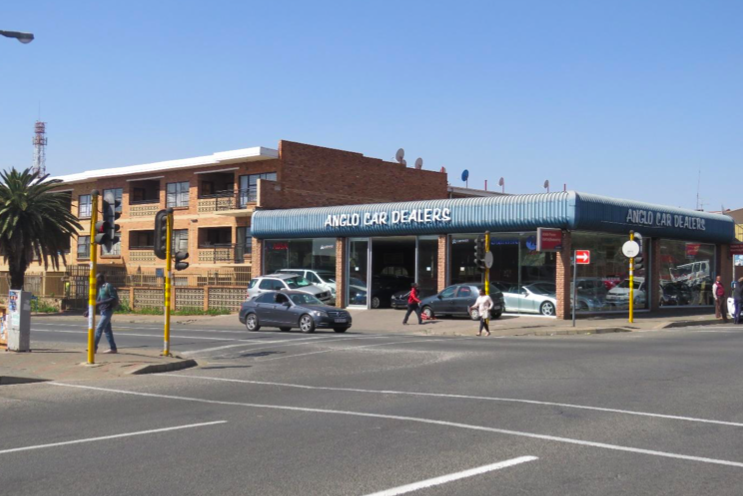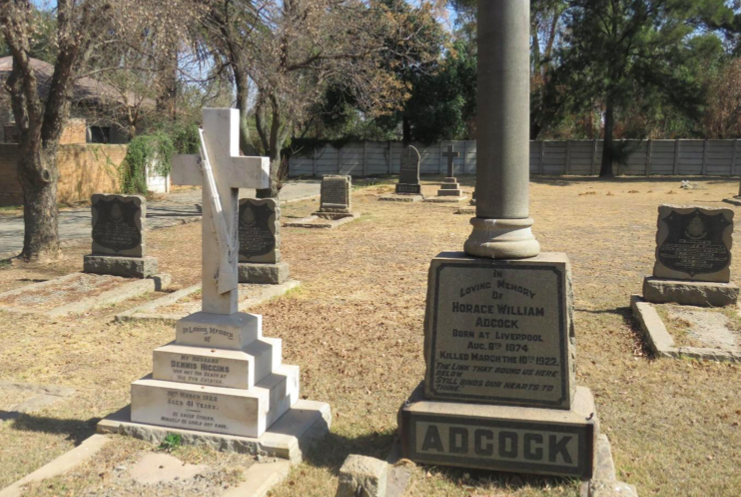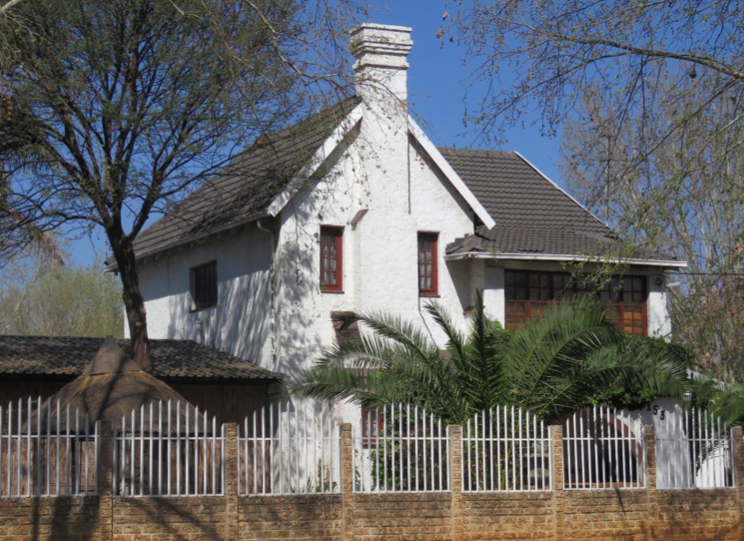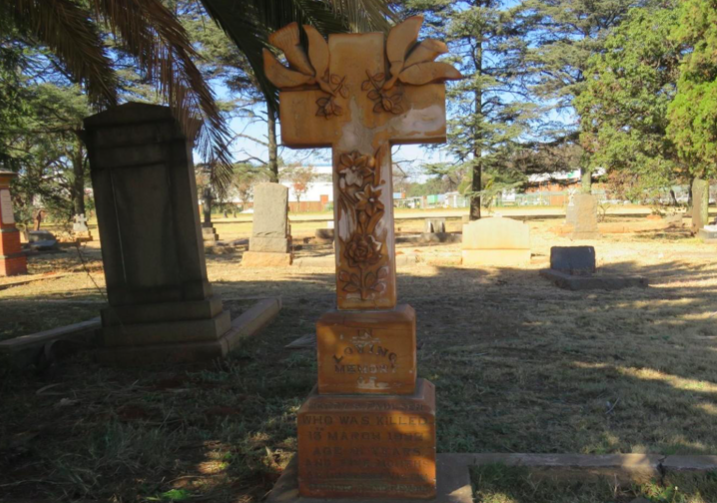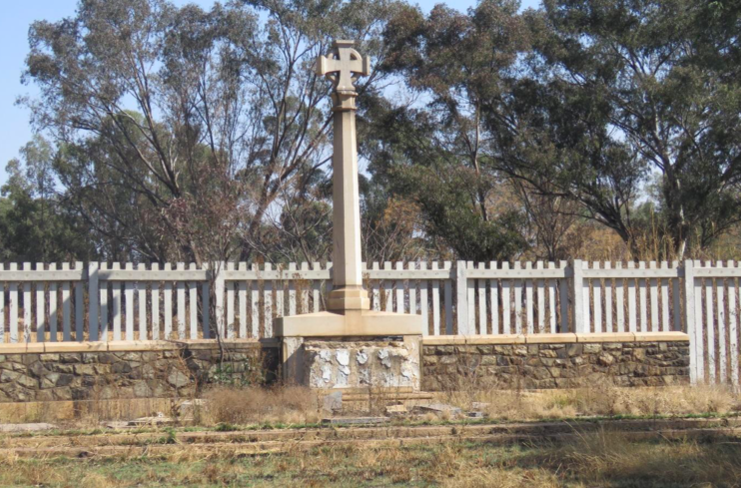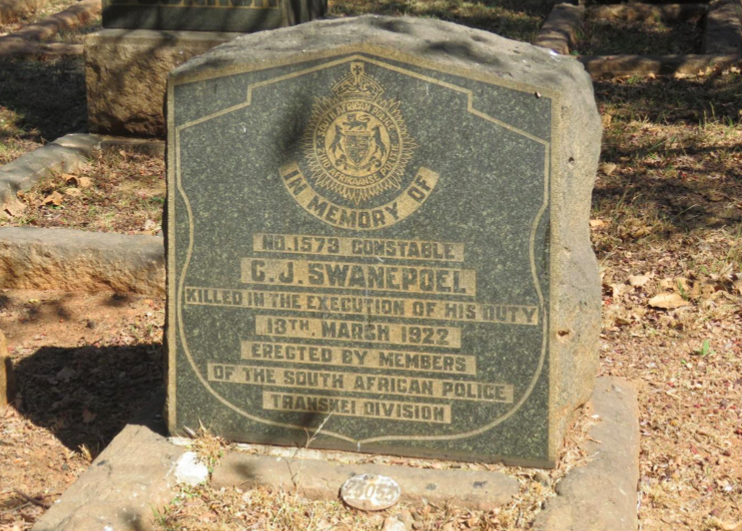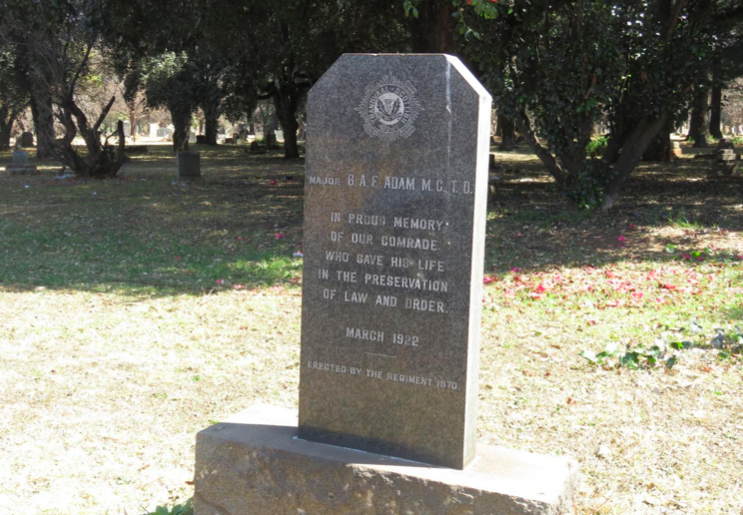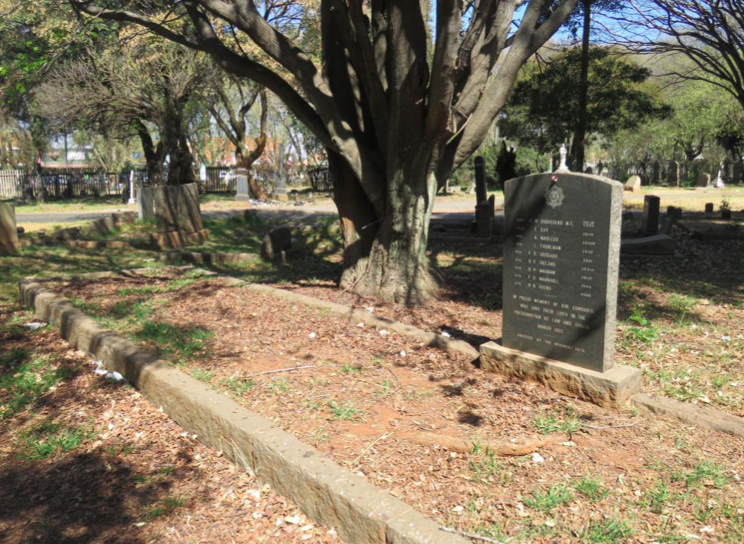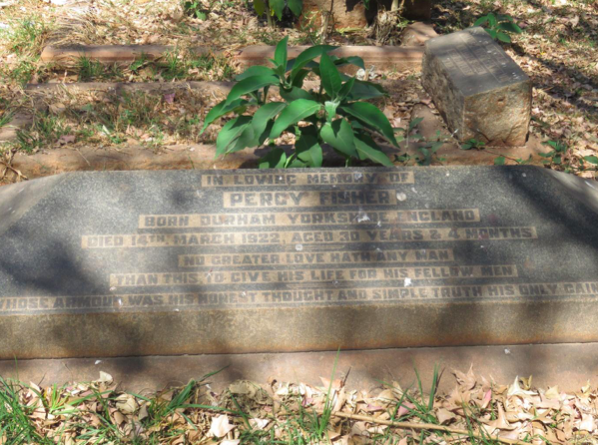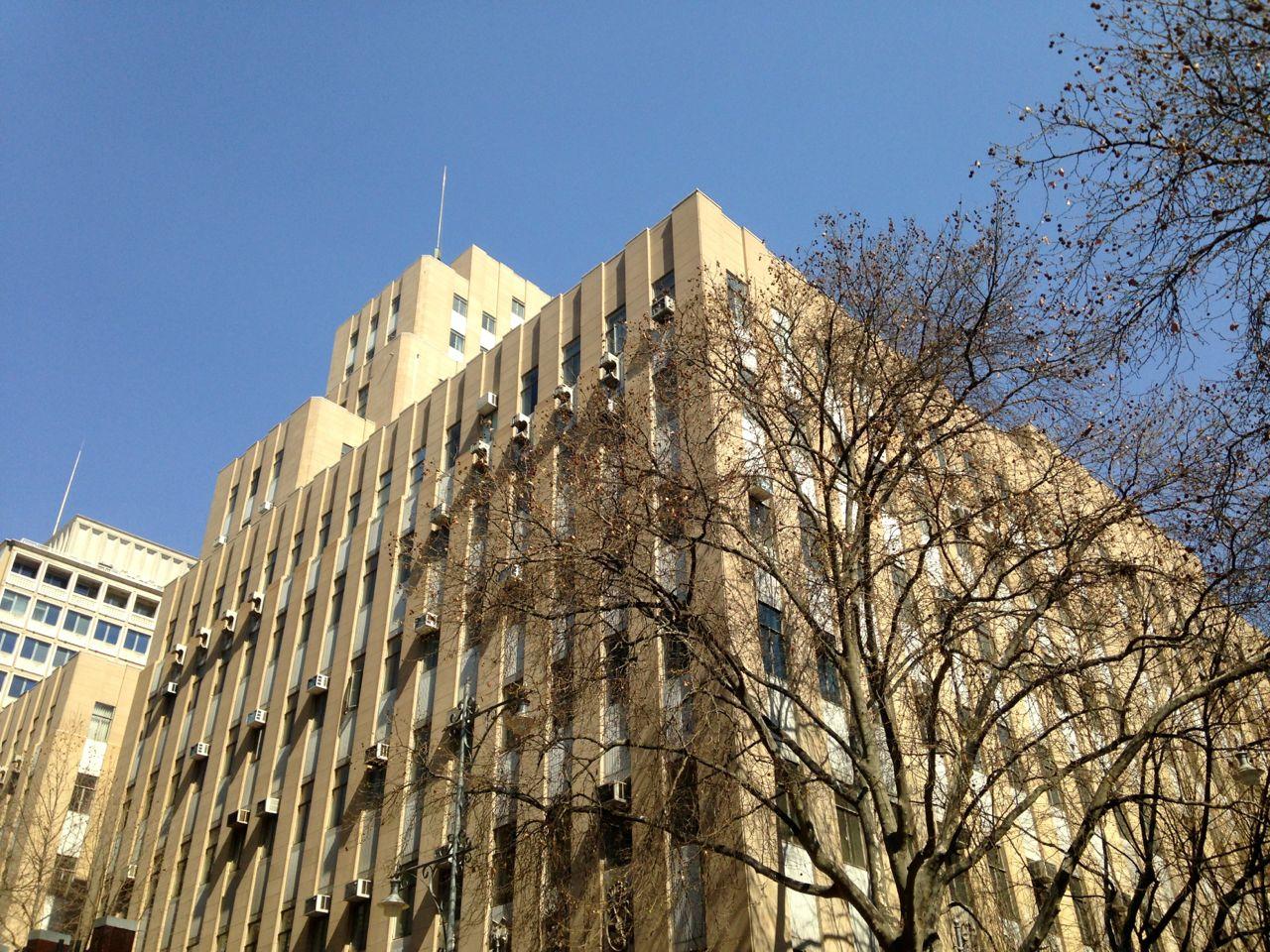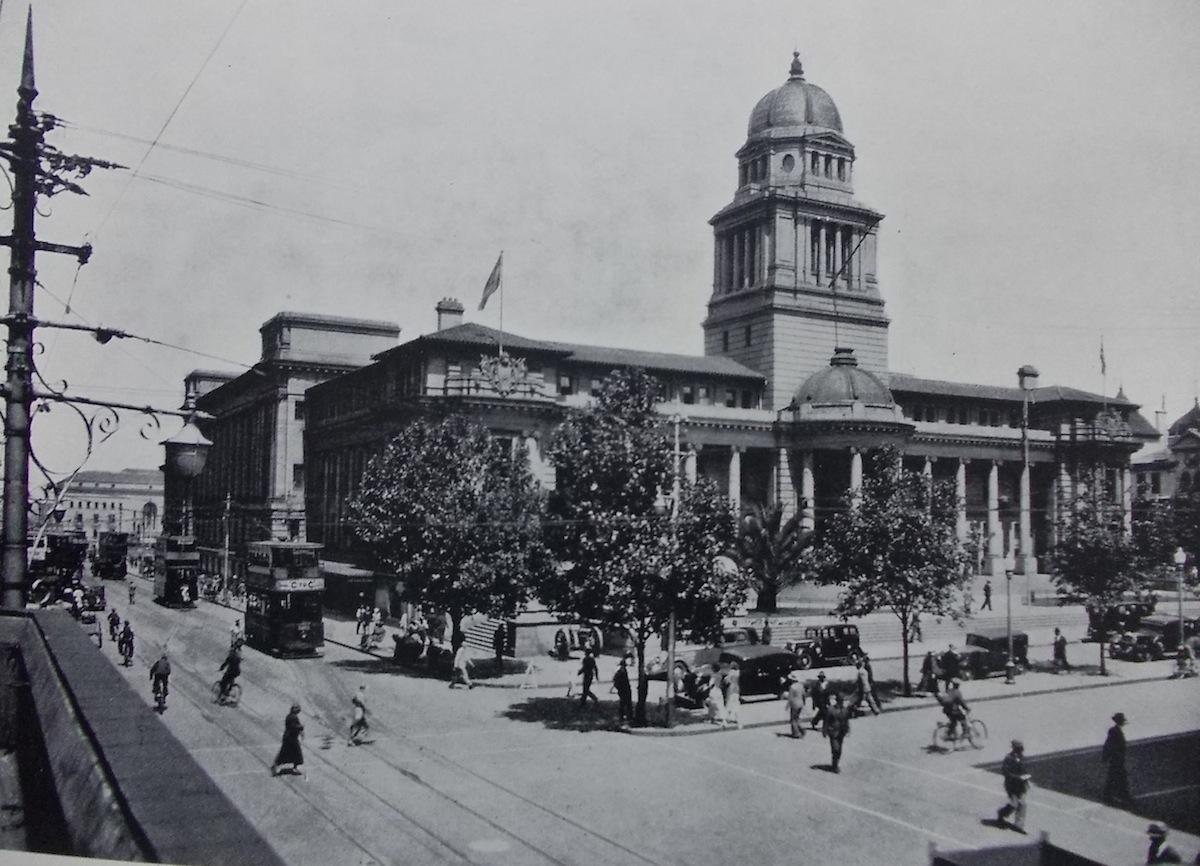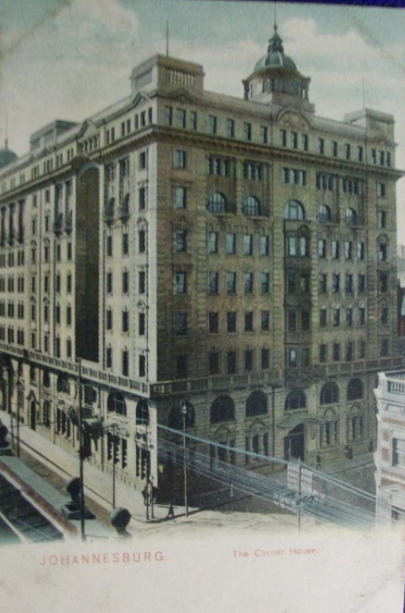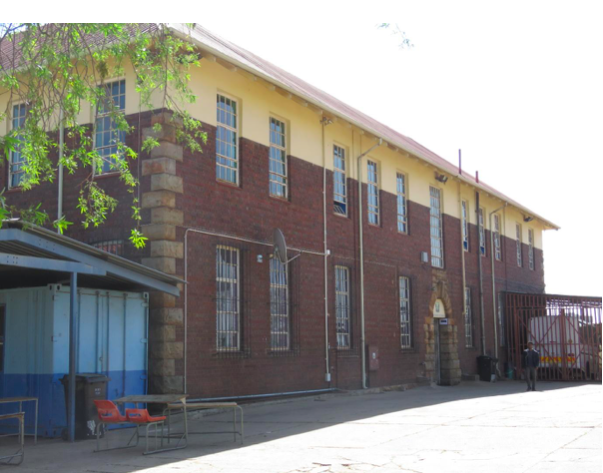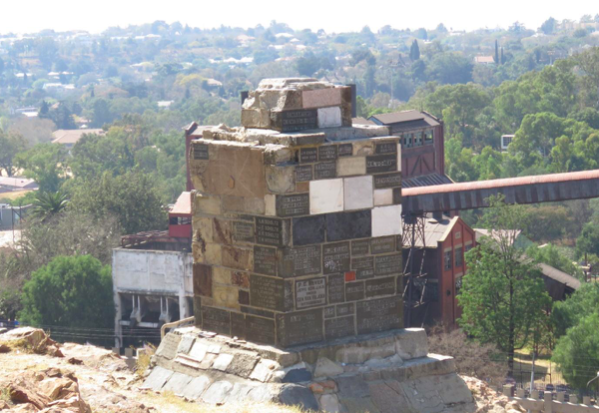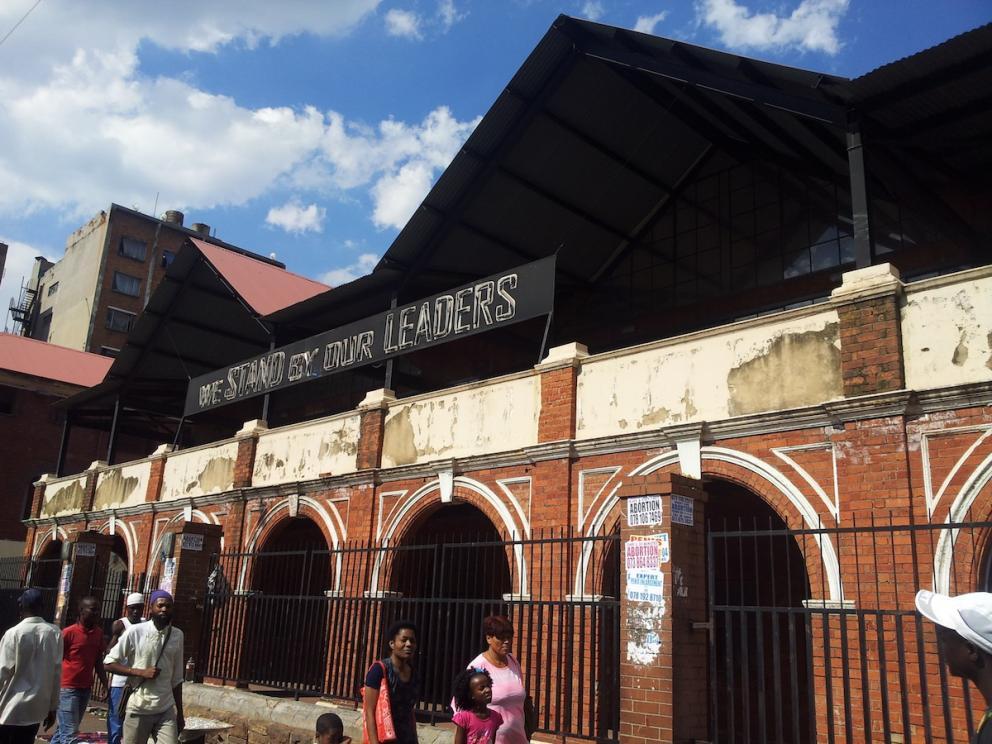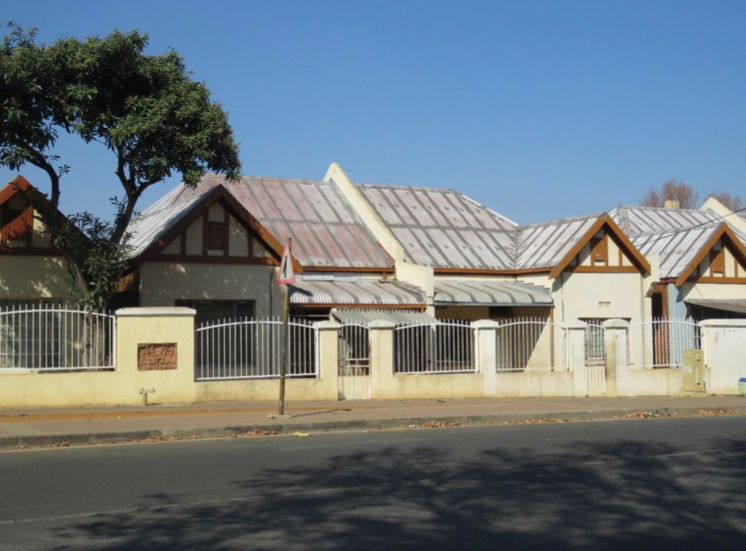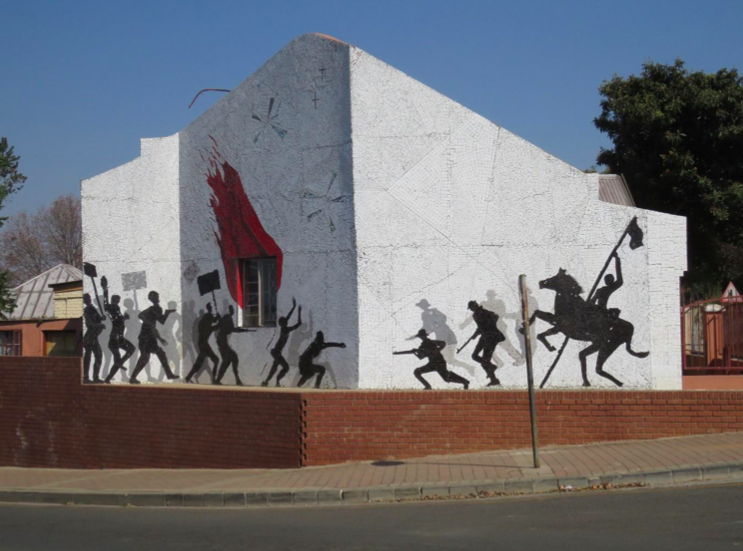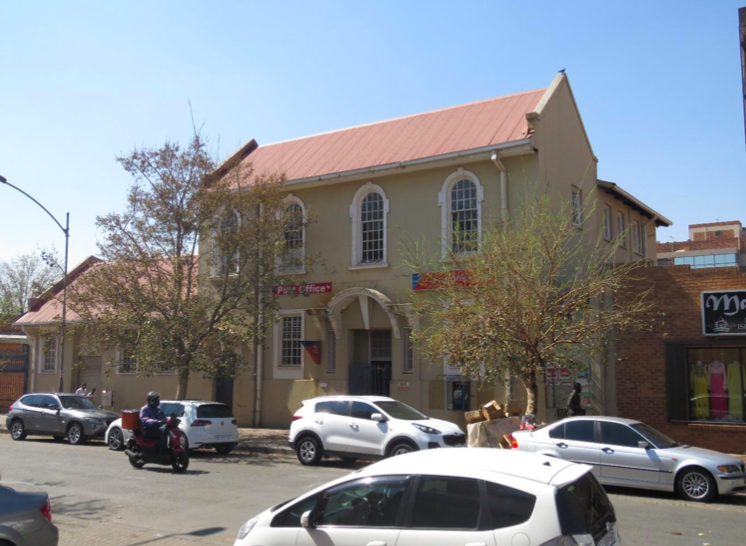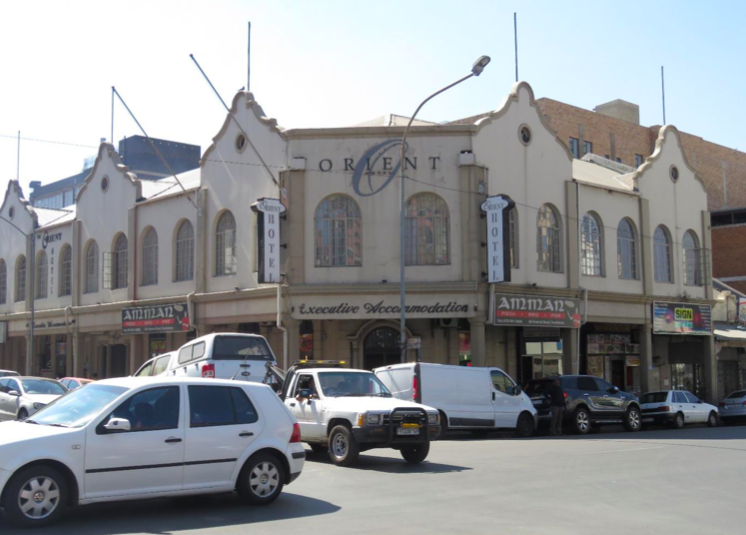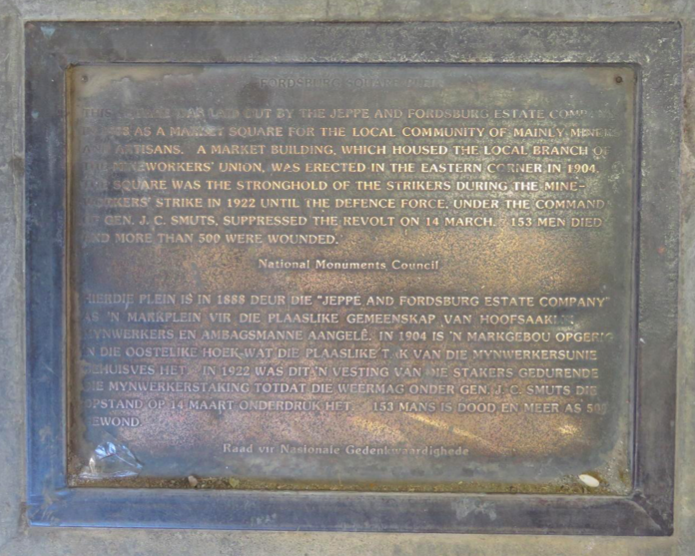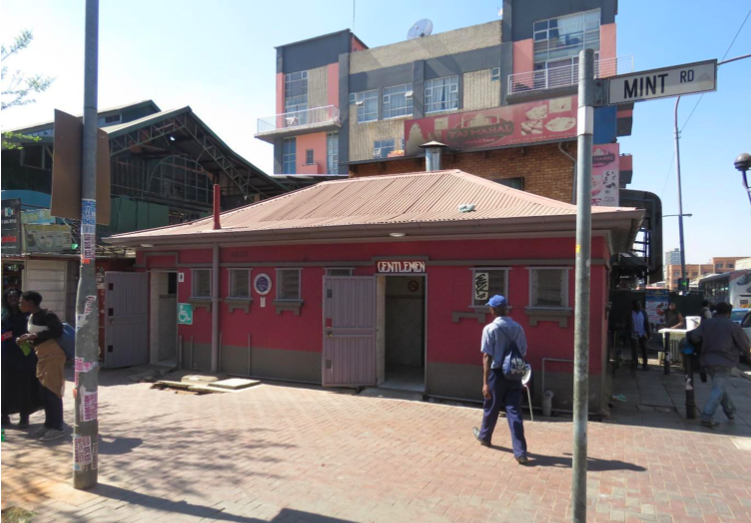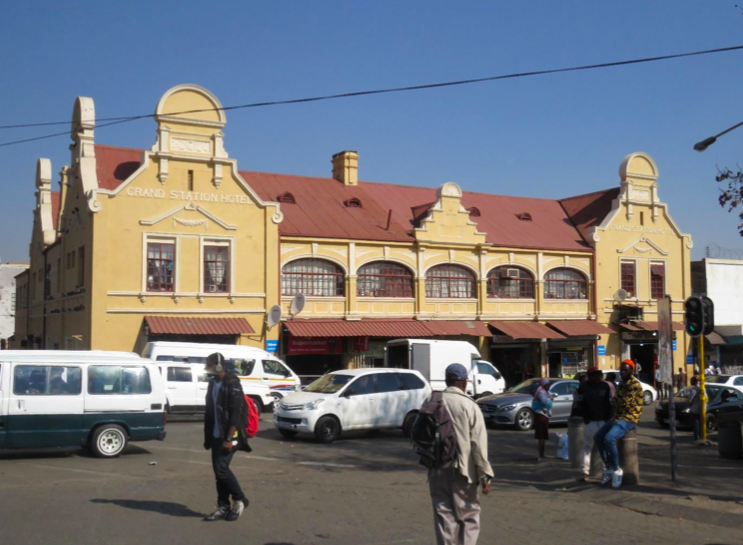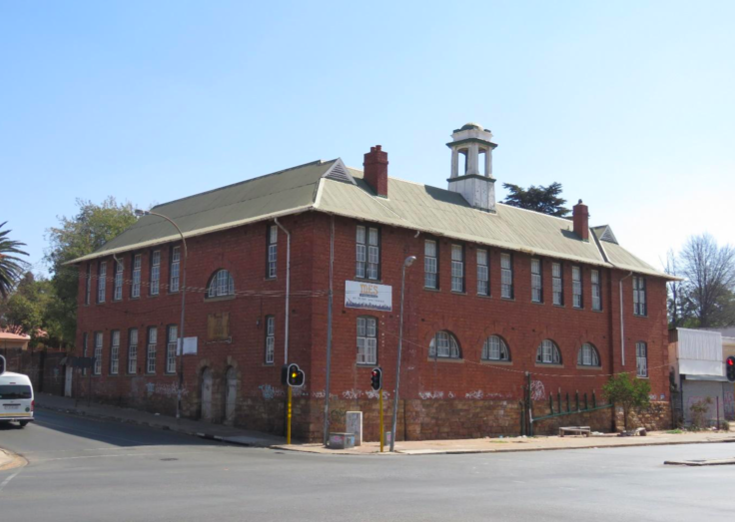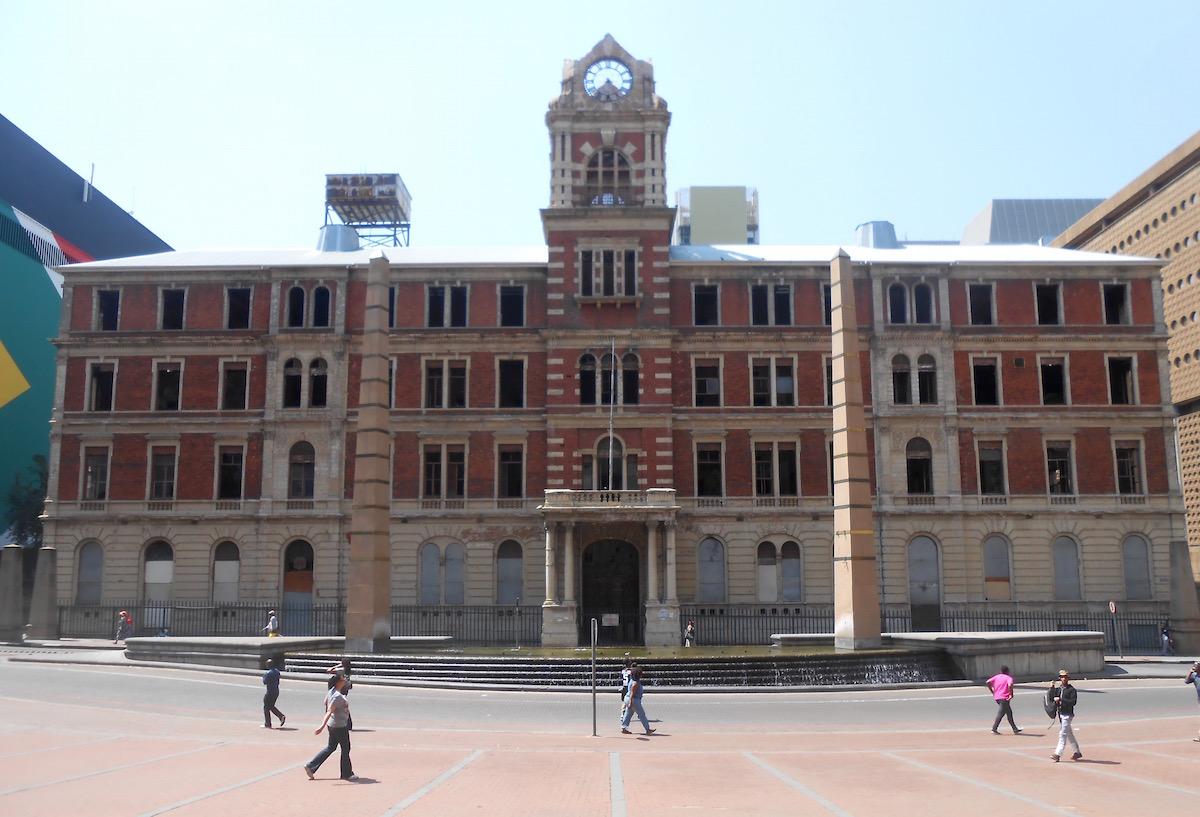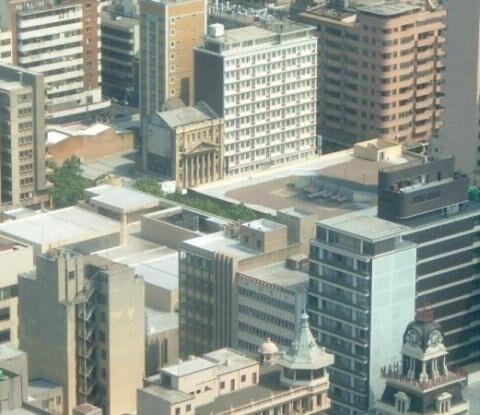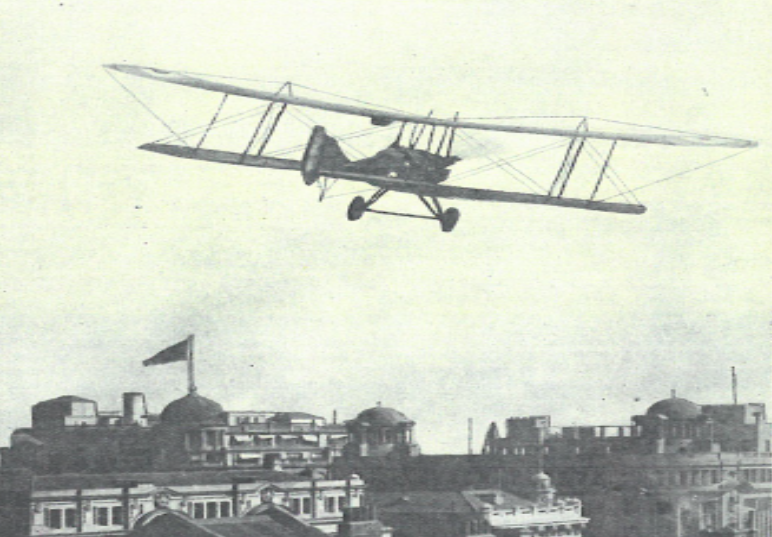
Disclaimer: Any views expressed by individuals and organisations are their own and do not in any way represent the views of The Heritage Portal. If you find any mistakes or historical inaccuracies, please contact the editor.
In the previous article the origin, course and outcome of the 1922 Rand Revolt were discussed (click here to read). In this follow-up article, some of the surviving sites from this event are reviewed.
Johannesburg, Benoni and Brakpan were most affected by the Revolt and surprisingly many sites in these towns have survived and are still accessible to the interested visitor. Bear in mind in 1922 the towns on the Rand were much smaller than today and other than the railway, the only road connecting them was Main Reef Road.
1. Benoni - bombing of. On Saturday 11 March, a South African Airforce (SAAF) aircraft circled over this town and dropped four bombs. One bomb wrecked the Park Café at the corner of Woburn Avenue and Bunyan Street, killing Mrs. Maria Magdalena Truter, resident of the adjacent house. Another bomb went through the roof of the Mine Workers Hall wrecking the kitchen. One failed to explode and another hit the Court House. I was unable to locate any tombstone of Mrs. Truter who was buried at the old No. 1 Dutch Reformed precinct of the Benoni Rynsoord cemetery.
Corner Woburn Avenue and Bunyan Street, Benoni, where the SAAF bombed the Park Café in error, killing Mrs. Truter, who lived in an adjacent house (SJ de Klerk).
2. Benoni - Rynsoord Cemetery. This historic cemetery, where the first burial took place in 1911, contains at least eight graves from the 1922 Strike. It seems the remains of some of the Afrikaner strikers who were killed during the Revolt were subsequently conveyed to their family farms for burial. Humphriss and Thomas claim as many as 11 coffins were conveyed for burial to the Northern Cape. I suspect most families of strikers killed during the revolt lacked the funds to erect tombstones over their graves.
In this cemetery are four black granite tombstones to Constables Frederick Henry Ludwig Howe (killed 10 March), N. A. C. Kruger (killed 10 March), Benjamin Hannant (killed 10 March) and Sergeant F. W. Hooper (killed 12 March). There is a broken white marble tombstone, in memory of Constable Addison Ridley Jordan. There are also the tombstones of Dennis Higgins and Horace W. Adcock who were most likely members of the Special Police contingent. Lastly, there is a black granite tombstone to Sergeant H. H. Roux of the Transvaal Scottish Regiment, killed at Brixton Ridge. These graves are all positioned closely together in the old English (Anglican) precinct near the south-western perimeter. Park at the cemetery offices and walk about 100 meters towards the south-west.
Tombstones of Horace Adcock and Dennis Higgins, most likely members of the Special Police, killed while guarding the mines (SJ de Klerk)
3. Benoni - Mine Workers’ Hall. Also known as the Workers’ Hall or Trades Hall. Opened in July 1920 it was located at 91 Market Avenue, now Prince’s Avenue. At the time Benoni did not yet have a town hall and the Trades Hall was therefore a popular venue for social gatherings. During the Revolt it was bombed by the air force and subsequently set on fire by either disgruntled citizens or the military. It later became the Lido Cinema, then the Vista Cinema. Abandoned and occupied by vagrants, it increasingly fell into disrepair and was regretfully demolished in 2003.
4. Benoni - Victoria Railway Halt. The Benoni strikers anticipating an attack via the railway from Johannesburg to relieve the beleaguered Benoni Police Barracks, concluded the most likely position for such an assault would be the railway line from the point where it turns north near the Dunswart Iron and Steel Works to the halt at the end of Victoria Avenue. Here the strikers found cover in the cottages near the Iron Works, in the orchard bordering the railway line, in the Benoni West School (still extant) and in the upper storey of a house on the corner of Howard Avenue and Bright Street (still standing).
The double storey house at the c/o Howard Avenue and Bright Street, Benoni, occupied by armed strikers firing at the advancing Transvaal Scottish contingent (SJ de Klerk).
The partially trained troops of the Transvaal Scottish regiment suffered 12 dead and 26 wounded from accurate striker fire, many of whom had served in the military during the recent World War.
5. Boksburg Cemetery. In the old Anglican precinct of this historic cemetery lies the tombstone of Harry B. Paulsen. His epitaph reads, ‘Who was killed on 13 March 1922, aged 21 years, an innocent victim during the Rand revolt’. A search of the older precincts of the cemetery failed to locate the graves of any of the three strikers killed during the clash with the police at the Boksburg prison on 28 February 1922. David Lucas Krause and Dirk Hendrik Ackerman were buried in this cemetery while Jacobus Pretorius Terblanche was buried somewhere in the Free State. Unfortunately, the surviving records of the Boksburg Cemetery seem to only commence from 1937.
Tombstone of Harry B. Paulsen (source SJ de Klerk)
6. Boksburg Prison. This prison where over 20 strikers were detained following the clash with the police on 27 February 1922 still stands in Commissioner Street, Boksburg. Some of the Benoni strikers may also have been imprisoned here after the revolt was suppressed. It is alleged ‘Siener’ van Rensburg was also goaled here after the suppression of the 1914 Afrikaner Rebellion.
7. Brakpan Mine Garden of Remembrance. The monument to and graves of the 5 members of the Special Police and 4 mine officials killed during the attack on the Brakpan Mine are located at this vandalised and neglected Garden of Remembrance.
It is situated south-west of Main Reef Road, near to the ANZAC Primary School and immediately north of the Royal Oak Country Club. Be very vigilant when visiting this deserted site.
The much vandalised garden of remembrance at the defunct Brakpan Mine commemorating the members of the Special Police and Mine Officials killed while attempting to protect the mine property Their graves are in front of the monument (Source SJ de Klerk).
8. Germiston - Primrose Cemetery. This historic cemetery where the first burial took place in 1893 contains the graves of Troopers G. Brown and A. V. Higham of the Transvaal Scottish Regiment killed in action at Dunswart Station on 10 March 1922 as well as Trooper Tjaard Johannes van der Walt of the Railway and Harbours Brigade killed at Brixton on 12 March 1922. There are also the two tombstones of policemen, Sergeant James Tanner and Lance Sergeant Paulus Petrus Joubert killed on 10 and 11 March 1922, respectively. All the above graves are in the vicinity of the now derelict rest room on the northern side of the entrance pathway, about 200 meters west of the cemetery entrance.
9. Johannesburg – Auckland Park Country Club. On the grounds of this fashionable country club, north of Kingsway Road, Lieutenant Colonel Thackeray established his headquarters in preparation for the final attack on the Fordsburg Market Square.
10. Johannesburg - Auckland Park Police Station and Artillery Barracks. This Police Station no longer exists as the massive SABC complex was erected on this site. At the time of the 1922 Strike, there were also Artillery Barracks from which the name ‘Artillery Road’, connecting Twickenham Avenue and Bunting Road is derived.
11. Johannesburg - Auckland Park Race Course. From here strikers sniped at the police contingents on the Brixton Ridge. It is now covered by the Auckland Park Campus of the University of Johannesburg.
12. Johannesburg - Braamfontein Cemetery. This historic cemetery opened in April 1888. It contains the graves of W. A. Kirsten and Lieutenant W. H. Heeley of the Imperial Light Horse Regiment (ILH), both killed at Ellis Park. Their graves are north-east and almost adjacent to the wall separating the crematorium from the graves and directly south of the grave of Captain Austin Reid, the 1st Johannesburg recipient of the Victoria Cross award.
The graves of the three Hanekom Brothers shot by the Transvaal Scottish, while allegedly trying to escape in the valley south of the current ‘Die Fakkel Skool’ in Rifle Range Road, are directly north of the western end of the urn garden. Johannesburg Heritage placed a plaque indicating their graves. Spare a thought for their mother, who accompanied her neighbor, Mrs. Smith when she visited the mortuary, suspecting her husband’s body might be there. At the mortuary Mrs. Hanekom unexpectedly came upon the bodies of her three sons, the youngest merely 17 years old. It is said she suffered a permanent tremble due to the shock of seeing their bodies there.
The graves of nine policemen killed in action between 10 and 13 March 1922 are in the Police Precinct, south of the Dynamite Monument. They were called up to assist from areas as distant as the Eastern Cape, Transkei and Natal.
Tombstone of Constable C. J. Swanepoel from the Transkei Division killed on 13 March 1922 (SJ de Klerk).
On 5 May 1924, the last of the 33 military and 29 striker/civilian remains were removed from the Milner Park temporary cemetery (opened 12 March 1922) and reinterred in the Braamfontein Cemetery. Some of these striker graves are presumed to be be situated about 200 meters south-west of the Cemetery offices. Drive past the cemetery offices for about 200 meters. Turn left into a short roadway, which ends in front of an open plot, where their unmarked graves are thought to be.
The tombstone of H. W. Ross on the western perimeter also commemorates the deaths of his three sons. Two were killed in action in Flanders during the First World War while his youngest son Frederick A. V. Ross of the Transvaal Scottish, died in the Boksburg Hospital on 13 March 1922 from wounds received at the Dunswart Crossing.
Following the battle for the Brixton Ridge, some of the Active Citizen Force (ACF) units bivouacked in the School of Mines Precinct for African mine workers, positioned at the extreme north-western end of the cemetery. This is also where the monumental tombstone of Enoch Sontonga, composer of the national anthem ‘Nkosi sikelel iafrika’, is situated.
13. Johannesburg - Brixton Cemetery. This, the second oldest Johannesburg cemetery, opened for burials in 1908. Near to the entrance is the large Marais family gravesite where Pieter Marais is buried. Marais was shot by the strikers for assisting a police constable escape from the Fordsburg Charge Office, when under attack by the strikers.
North of the roadway to the cemetery’s maintenance offices, also known as ‘Mayoral Row’, because of the presence of several graves of previous Johannesburg Mayors, lies the grave of Major G. A. F. Adam, M.C. of the Transvaal Scottish Regiment.
Grave of Major G. A. F. Adam M.C. in Mayoral Row, Brixton Cemetery (SJ de Klerk)
Slightly to the north- west of these offices is a mass grave of nine members of the Transvaal Scottish Regiment. Two of the deceased fell at Dunswart Station and the remaining seven at the Brixton Ridge. Of all the ACF units fighting in the Revolt the Transvaal Scottish regiment suffered the most casualties.
Mass grave of the Transvaal Scottish Regiment in the Brixton Cemetery (SJ de Klerk).
In the same row as the above graves is the tombstone of Percy Fisher, the ringleader of the Revolt in Johannesburg, who together with H. Spendiff committed suicide when their stronghold at the Fordsburg Market Square was about to be captured.
Tombstone of Percy Fisher (SJ de Klerk).
Nearby is the small tombstone of Eleanor Jane Berry who died of gunshot wounds at Crown Mines Cottages on 10 March 1922.
The grave of Taffy Long who was executed for allegedly killing shopkeeper Pieter Marais is situated immediately west of the maintenance offices and near to the fence separating the cemetery from Bartlett Road, which runs parallel to the cemetery. It is said 10 000 people attended his funeral.
14. Johannesburg - Brixton Ridge. This Ridge now heavily built up, is still worth viewing. Drive west along Empire, Stanley, Kingsway and Perth Roads to observe the low hills to the left where the police contingents were stationed to prevent the various striker commandos from linking up and marching onto the Johannesburg Town Hall, to take control of the town.
15. Johannesburg - Chamber of Mines (now Minerals Council) Building, 5 Hollard Street, Johannesburg. This the 2nd Chamber of Mines building, was designed by Emley & Scott and erected 1921-23. It was subsequently enlarged and renovated by Architects Kef Gardiner & McFadyan. On the exterior walls are aluminium art carvings designed by Major J. Gardener displaying different aspects of mining activities.
Chamber of Mines - now Minerals Council - Building (The Heritage Portal)
16. Johannesburg - City Hall (then Town Hall). Here, Labour MP Bob Waterston, told the strikers that rather than go under in the struggle, strikers were prepared as a last weapon to launch a revolution. When the strike turned violent Waterston quietly departed to attend the parliamentary session in Cape Town. The building designed by Hawke & McKinley in the Beaux Arts style was erected 1910-14. The main lobby in Rissik Street was finished in marble, while the hall itself was decorated with rich classicist reliefs in plaster.
Old photo of City Hall
17. Johannesburg - The Corner House. (the 4th). Situated on the corner of Commissioner and Simmonds Streets, this building was designed by the well-known early Johannesburg architectural firm Leck & Emley. It was erected in 1904 and remained for many years the tallest building in Johannesburg. It was therefore well suited to having an observer placed on its rooftop to direct the fire of the artillery piece located in Sauer Street. Perhaps it is also appropriate that ‘The Corner House’ should be directly involved in the suppression of the Revolt, as its Chairman Sir Lionel Phillips was one of the main proponents for modifying the colour bar on the mines. This building was later merged with the National Bank Building, which stood alongside, and this enlarged building became the headquarters of Barclays Bank. The Market Street entrance added in 1953, was designed by Gordon Leith. The building’s classicist ornamentation and bronzed bay window section and dome makes this structure a memorable milestone in the Beaux Arts mode.
Postcard of Corner House (Braune and Levy Collection)
18. Johannesburg - Cottesloe School (now New Nation School). This School was occupied by strikers as it was an important vantage point for observing any troop movements from the east towards the Brixton Ridge. It is situated to the north-west of the Milner Park Junior School with its entrance in Krause Street. A keen observer may still be able to detect bullet marks on the school walls. A classroom on the second floor where the so-called Knopkierie Commando congregated, was damaged by shell fire from the Transvaal Horse Artillery bombarding the Brixton Ridge from the corner of Jan Smuts Avenue and Empire Road.
The Cottesloe School on the western edge of the Brixton Ridge. The entrance faces east (SJ de Klerk).
This is one of the more historic locales in Johannesburg. In addition to the Cottesloe School, there is the ‘Oudstryders’ Monument to Boer burghers of the Anglo Boer War as well as the Cottesloe Reformed Church designed in 1933 by Gerard Moerdyk of Voortrekker Monument fame.
Gazing north-east from the Cottesloe School, past the Oudstryders Monument and the old Johannesburg Gas Works towards the corner of Empire Road and Jan Smuts Avenue (SJ de Klerk).
19. Johannesburg - Drill Hall. Conveniently located across from the Union Grounds, which served as a parade ground, the Drill Hall built in 1904 is still extant. It served as the general mobilisation centre for the Active Citizen Force Units during the 1922 Strike. Following the departure of the Military from it in in 1992, the building fell into disrepair but was subsequently refurbished. It is situated on the corner of Plein and Twist Streets.
Drill Hall (The Heritage Portal)
20. Johannesburg - Ellis Park football ground. The site where the Imperial Light Horse (ILH) was attacked by the Jeppe and Denver striker commandos is now covered by the huge Ellis Park Rugby Stadium. Park Lane still exists but the houses from where the ILH were fired upon have been demolished and have been replaced by light industrial buildings.
Victorian semi-detached houses in Derby Street near Ellis Park, like those from where the Denver and Jeppe striker commandos unexpectedly fired at the ILH (SJ de Klerk).
There is a large painted wall mural at the corner of Bertrams and Derby Streets in New Doornfontein, depicting the 1922 Revolt (SJ de Klerk).
21. Johannesburg - Fordsburg Police Charge Office. The original building still stands in Commercial Road. Here Lieutenant McDonnel and 9 men held out until late afternoon on 10 March 1922, prior to escaping to the nearby Fordsburg Police Barracks. After their escape the building was set on fire by the strikers, subsequently rebuilt and currently serving as a post office.
The Fordsburg Police Charge Office, now a post office (SJ de Klerk).
22. Johannesburg - Fordsburg Police Barracks. The old barracks have been incorporated into a new housing estate adjoining De La Rey Street. The prison cell windows can still be viewed on the eastern side of De la Rey Street.
23. Johannesburg - Fordsburg Market Square and Public Toilets. This square laid out in 1888 developed into a rather important commercial centre. The square was bounded by a row of little shops and two hotels, Mynpacht (1896) corner of Albertina Sisulu and Central Roads and Sack’s Hotel (1895-6), now the Orient Hotel, in Central Road.
The historic Sacks Hotel building, now the Orient Hotel, opposite the Fordsburg Market Square (SJ de Klerk).
The two storey Market Building, used by strikers as their headquarters stood on the eastern side of the square directly opposite Sack’s Hotel, but has been demolished. Regretfully, the square has been substantially altered and little remains of its original features.
Plaque erected by the National Monuments Council at the Fordsburg Market Square (SJ de Klerk).
The public toilet building on the south western corner, fortified as a blockhouse by the strikers, displays a Johannesburg Heritage Blue Plaque. Older readers may recall the furore when the internal wall tiles and urinals, still showing bullet damage were inadvertently removed by the city council in the early 1980’s. Strikers dug trenches on the perimeter of the square bordering Mint and Commercial (now Dolly Radebe) Roads, anticipating attacks from the north and west.
The historic Fordsburg public toilet building. Note the Blue Plaque erected by Johannesburg Heritage between the windows to the left (SJ de Klerk).
24. Johannesburg - Grand Station Hotel, Jeppe. According to Marc Latilla, it was built to serve miners from the nearby Wolhuter mine. It was one of the oldest and grandest of the Johannesburg hotels, designed by Reid & Williams and built in 1896-97. During the 1922 Strike it served as a soup kitchen and refuge. Another source recalls the Jeppe striker commando using it for observation purposes towards the Jeppe Dip. When armoured trains operated by the Railway and Harbours Brigade steamed past they would machine gun the building. In more recent times its restaurant called Norman’s Grill reputedly served the best LM prawns in Johannesburg. Although the hotel and restaurant are long closed, this historic building on 301 Main Street overlooking the Jeppe Station still exists. I recall going there for a prawn dinner at this restaurant when its closure was announced. Regretfully, shortly prior to the completion of this article the building was severely damaged in a fire and one hopes it will survive this catastrophe! (click here for details)
Grand Station Hotel adjacent to the Jeppe Railway Station (SJ de Klerk).
25. Johannesburg - Major Adam and Lieutenant Gregorowski of the Transvaal Scottish Regiment. Major Adam, described by the Durban Light Infantry (DLI) as ‘a white-hot customer’, and Lieutenant Gregorowski were both shot and killed in Main (now Albertina Sisulu) Road, Fordsburg, while attempting to capture the Market Square ahead of the DLI. They were shot midway in the city block bordered by Park Drive and Langerman Street. Apparently Major Adams last words were, ‘I am damned if the DLI will be in first!’, and rifle in hand he and Gregorowski charged the Market Square only to be killed moments later. Lieutenant Gregorowski is the son of Judge Gregorowski who sentenced four members of the Reform Committee to death for their role in the infamous Jameson Raid. President Kruger subsequently granted the four condemned prisoners clemency. Lieutenant Lennox Gregorowski is buried in the old Voortrekker Hoogte (now Thaba Tshwane) No. 1 Military Cemetery.
26. Johannesburg - Methodist Church, Fordsburg (now a bakery). In 1922 this building served as a Methodist Church. The SAAF while attempting to bomb the Fordsburg Square instead dropped a bomb on the church spire. The original building situated in Mint Street now serves as the premises of the appropriately named Divine Bakery and Confectionary.
27. Johannesburg - Milner Park. This historic site was donated by the City Council in 1903 to be used as an Agriculture Show Ground. On 14 March 1922 at least 6000 refugees crammed into the grounds to avoid the fighting around Fordsburg and Brixton. These evacuees caused considerable damage and the 1922 Agriculture Show had to be postponed by a week to accommodate repairs. This was where the temporary camp of the Special Police was situated and those killed during the assault on Brixton Ridge were also in the interim buried here. Milner Park is now the West Campus of Wits University.
28. Johannesburg - Milner Park Junior School (now a church). This School provided the strikers with an unobstructed view towards Milner Park. A contingent of the Transvaal Scottish advancing parallel to the northern boundary of the Braamfontein Cemetery towards the Brixton ridge ran into severe rifle fire from strikers in this building and in a ramshackle house near the corner of the cemetery. In no time the Transvaal Scottish suffered 3 killed and 29 wounded.
The original Milner Park School building erected in 1909 (SJ de Klerk)
The building is on the corner of Enoch Sontonga and Solomon Streets in Pageview, west of the Elizabeth Sturrock Park.
29. Johannesburg - New Law Courts and Von Brandis Square. The New Law Courts were designed by Sytze Wierda. In 1894 Wierda added a further building, the Court House, which was to handle the increase in the number of cases as the Johannesburg population steadily increased. After the opening of the Supreme Court in Von Brandis Square, the law courts were used as magistrates’ courts, until they were demolished in 1948. This is where the police were stoned and shot at while trying to control a large crowd of strikers and their supporters. Other buildings designed by Wierda of significance during the strike, include the Johannesburg Post office (still extant in Rissik Street) and the Marshall Square Police Station, demolished in 1968.
30. Johannesburg - Rissik Street Post Office. In the afternoon of 7 March 1922, a mob led by a women’s commando raided the Rissik Street post office and intimidated the staff at the adjacent telephone exchange.
The three storey post office (1895-97) with basement consisted of offices sorting areas, corridors with private post boxes and a central public hall with counters on the ground floor. The back the building bordered on the Standard Building and Theatre from the same period. Six years later it was found too small and a fourth storey was added.
Rissik Street Post Office (The Heritage Portal)
31. Johannesburg - Rosherville Generating Station. One of the power stations operated by the Victoria Falls and Transvaal Power Company (VFP). The VFP was formed in 1906 to supply power to South Africa and Rhodesia. Other power stations were at Simmerpan, Brakpan, Vereeniging and the Robinson Mine. The building housing the Rosherville unit still exists, although much vandalised. Rosherville Lake is still there, fed by the Natal Spruit but now greatly reduced in size. Both sites are just north of where Houer Street becomes Lower Germiston Street.
The Natal Spruit was so named because many diggers at the Johannesburg Gold Fields originated from Natal and established themselves at the Natal Camp, later known as the Natal Spruit. Reduction plants were placed near water and this Spruit flowed from Doornfontein across Commissioner Street and away to what later became known as the Rosherville Lake. In the very early days, the Natal Spruit was used as the water supply for the hospital, goal, public buildings and police.
32. Johannesburg - Standard Bank Building Fordsburg. Situated on the corner of Mint and Main (now Albertina Sisulu) Roads, opposite the Fordsburg Market Square. Behind the frosted windows of the adjacent bottle store (no longer extant) in Mint Road, the DLI surreptitiously placed a machine gun to fire at point blank range at the strikers entrenched across the road.
33. Tshwane - Swartkop Air Force Base. From this airfield, established barely a year prior to the strike, the newly fledged South African, Air Force’s (SAAF) hastily armed DH9 aircraft flew 172 missions against strikers along the Rand. Two of these aircraft failed to return as the SAAF suffered its very first operational casualties. See main photo of a SAAF scouting plane flying low over Commissioner Street on the way to observe the striker stronghold in Fordsburg.
The origins of the SAAF can be traced to 1919 when the British Imperial Government offered each of the self-governing dominions a gift of 100 aircraft and equipment to establish their own air forces. General Smuts accepted this offer on behalf of South Africa and appointed Lieutenant Colonel Pierre van Rynveld to select the aircraft which comprised Avro 504K’s, DH 9’S, BE 2e’s and SE 5a’s.
Readers will recall Lieutenant C. J. Venter piloted the aircraft in which his observer, Captain Carey Thomas was killed by striker ground fire over the Apex Mine. Interestingly in July 1931, now promoted to Captain, Venter, piloted Minister of Justice Oswald Pirow to Durban and back in an open cockpit SAAF Hartebeest or Wapiti aircraft.
34. Johannesburg - Trades Hall Building. This historic building where the Council of Action agitated the striker commandos to persevere with the strike, still stands at 63 Rissik Street, Johannesburg. Designed by pioneering architectural firm Arburrow & Treeby and built in 1914. It was listed in 1986 as one of Johannesburg's 100 most important heritage buildings. Ironically, this architectural firm also designed The View in Parktown, housing the Transvaal Scottish Regimental Association.
Trades Hall from above (The Heritage Portal)
35. Johannesburg - Union Grounds. This large city square was situated directly across the railway line from the Johannesburg Art Gallery in Joubert Park. Here, strikers and sympathisers respectfully listened to the Last Post, in memory of the three strikers killed in Boksburg. Since it is located opposite the Drill Hall, provisions and equipment for the military were also delivered here during the Revolt. Norman Herd in his book ‘1922’ states it was fortunate the strikers did not attack the Drill Hall and the Union Square as they contained large quantities of arms and ammunition that would have been of great benefit to them.
About the author: SJ De Klerk held many senior positions in HR during a distinguished career in the private sector. Since retiring he has dedicated time and resources to researching, exploring and writing about South African history.
References
- Humphriss D. & Thomas D. G. (1968) Benoni Son of my Sorrow. Town Council of Benoni.
- Illsley J. (1989). Swartkop 1921 – 1986. SAAF Museum Publication.
- Juta H. C. (1933). The History of the Transvaal Scottish. Hortors Limited, Johannesburg.
- Klein H. (1969). Light Horse Cavalcade 1899–1961. Howard Timmins, Cape Town.
- Martin A. C. (1969). The Durban Light Infantry 1854–1960. Volume 1. The Headquarter Board of the Durban Light Infantry in co-operation with The Regimental Association.
- Orpen N. (1975). The History of the Transvaal Horse Artillery 1904–1974. The Transvaal Horse Artillery Regimental Council, Johannesburg.
- SA Pictorial Stage & Cinema. Vol XIV., No. 346. Johannesburg, March 18th, 1922.
- Smith A. H. (1971). Johannesburg Street Names. Juta & Company, Johannesburg.
- The Johannesburg Historical Foundation. (Not dated). Some Historical Drives and Walks of Johannesburg. Framic Pty. Ltd., Johannesburg.
- The Star. (1922). Through the Red Revolt on the Rand. The Central News Agency Ltd.
- Van der Spuy K. (1966). Chasing the Wind. Books of Africa, Cape Town.
- Van der Waal G-M. (1987). From Mining Camp to Metropolis. Christo van Rensburg Publications (Pty) Ltd., Johannesburg.
- Walker I. L. & Weinbren B. (1961). 2000 Casualties. South African Trade Union Council, Johannesburg.
- Walker M. (2013). The Pioneer Architects of Johannesburg. Privately published.
Comments will load below. If for any reason none appear click here for some troubleshooting tips. If you would like to post a comment and need instructions click here.

